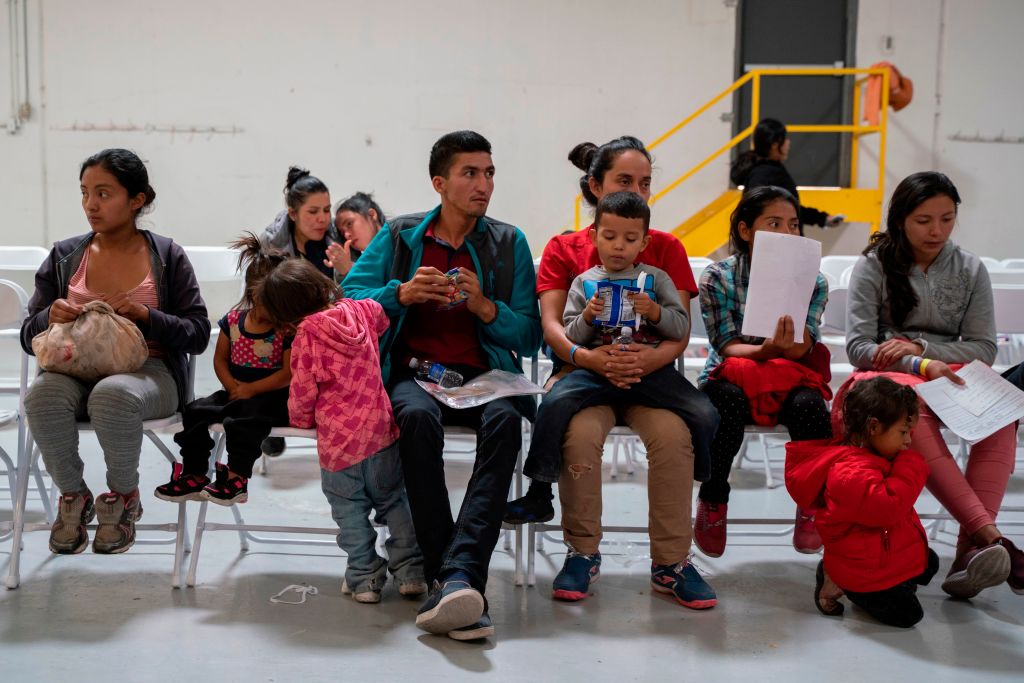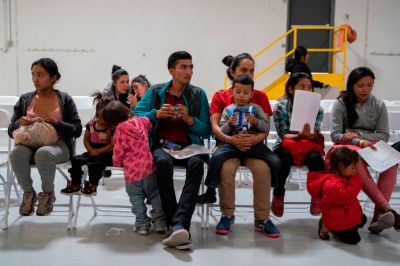In February, Texas Attorney General Ken Paxton sued the Catholic organization Annunciation House for assisting immigrants entering the country illegally and then refusing law enforcement’s requests for documents, accusing the nonprofit of “human smuggling.” The legal action brings up the question of Catholic teaching and practice regarding illegal immigration across the country generally.
Paxton’s legal filing alleges, among other offenses, that Annunciation House is engaged in “human smuggling” because it “contracts with a local company once or twice a week to transport migrants in passenger vans” and “knows that at least some of the aliens it provides services to are present illegally and are trying to avoid Border Patrol.”
Annunciation House leaders say they are ministering to people in need—as they have done for years—and that Paxton’s office took an aggressive and hostile approach with them from the beginning. Catholic bishops from around the country have defended Annunciation House’s work, and Catholic organizations’ right to carry out the charitable tenets of its faith.
What does the Catholic Church teach about immigrants and immigration?
The Catholic Church’s teaching on immigration grounds itself in the biblical commands going back to the Exodus of the Hebrews from Egypt and continuing throughout the Bible. In Leviticus 19:33-34, God commanded the Israelites to welcome aliens and to treat them justly:
When an alien lives with you in your land, do not mistreat him. The stranger who lives as a foreigner with you shall be to you as the native-born among you, and you shall love him as yourself; for you lived as foreigners in the land of Egypt.
In biblical times—with constantly warring kingdoms and the widespread enslaving of war’s foreign captives—this was a startling command. Even nearby outsiders were treated with suspicion, and aliens were easily prone to abuse in a strange culture with a language they did not understand. This early command to welcome the stranger was repeated throughout Jewish history in the Psalms and prophets. Jesus Christ continued this basic moral value when he recounted how people will be judged on the last day: “I was a stranger, and you welcomed me” (Matthew 25:35).
The Christian commands to charity and mercy further undergird an approach of welcome and compassion toward migrants. A key part of the monasticism that arose first in the late Roman Empire was to host weary travelers who came to the monastery door. As such, the Catholic Church’s default expectation is that just peoples will welcome aliens from other countries and treat them fairly.
However, the church also teaches that sovereign countries have a right to control their borders, can mediate the flow of migrants into the country, and can expect their laws will be obeyed by immigrants. Though Christians should be open to offering shelter to those without it, they must use their prudential judgment about who, when, and how they fulfill this Christian obligation. So it is with nations, which should seek to welcome whom they can while determining just, prudential limits.
The Catechism of the Catholic Church states:
The more prosperous nations are obliged, to the extent they are able, to welcome the foreigner in search of the security and the means of livelihood which he cannot find in his country of origin. Public authorities should see to it that the natural right is respected that places a guest under the protection of those who receive him.
Political authorities, for the sake of the common good for which they are responsible, may make the exercise of the right to immigrate subject to various juridical conditions, especially with regard to the immigrants’ duties toward their country of adoption. Immigrants are obliged to respect with gratitude the material and spiritual heritage of the country that receives them, to obey its laws and to assist in carrying civic burdens.
The United States Catholic Conference of Bishops (USCCB) in applying church teaching has issued several statements on the issue. In their 2000 pastoral statement “Welcoming the Stranger Among Us: Unity in Diversity,” for example, the bishops stated:
We Catholic bishops commit ourselves to continue to work at the national level to promote recognition of the human rights of all, regardless of their immigration status, and to advance fair and equitable legislation for refugees and prospective immigrants. Present efforts need to be strengthened and supported with new initiatives, both at the local level and at the national level as U.S. immigration law and practice change in the face of changing political pressures and social realities. In particular, Catholic lay people, diocesan officials, and bishops should continue to work together with community organizations, labor unions, and other religious bodies on behalf of the rights of immigrants in the workplace, schools, public services, our legal system, and all levels of government.
Yet the bishops affirm any country’s right, including the United States, to control its borders, immigration, and the just enforcement of its laws.
Moreover, the Catholic Church does not encourage unnecessary or irregular migration. “Ideally, unnecessary migration ought to be avoided; this entails creating in countries of origin the conditions needed for a dignified life and integral development” (Fratelli tutti, no. 129). In Catholic social teaching, the right to emigrate is generally constrained by the need for “just reasons in favor of it.”
How do Catholic institutions serve immigrants in the U.S.?
Nearly 14 percent of residents in the United States are foreign-born, amounting to around 45 million people. Of those, more than 10 million are in the country illegally, according to Pew.
In practice, the Catholic Church and its institutions are deeply involved with immigrants, legal and illegal. This is especially true given the preponderance of America’s immigrants who are Spanish-speaking and from Catholic countries and backgrounds. Though it’s difficult to know cumulative numbers, Catholic Charities Inc. estimated that it served 608,000 asylum seekers in 2021, including nearly 225,000 migrants who received shelter or respite services. Many Catholic dioceses and parishes have a Sunday Mass in Spanish (or other languages), ministries to Hispanics, and parish publications in Spanish. Some of these organizations come directly under the authority of a bishop and its priests. Others are independent but must ultimately answer to a bishop’s authority if they are going to call themselves “Catholic” or associate themselves with Catholicism.
Many Catholic hospitals and schools interact with illegal immigrants daily. Catholic institutions offer English-as-a-second-language (ESL) classes, job training, soup kitchens, and poverty relief efforts that serve vast numbers of immigrants. They also provide legal aid to navigate the immigration and naturalization process. This extensive effort in the U.S. traces its roots back to the mid-19th century, when a flood of Irish-Catholic immigrants fled to America from the Great Hunger in Ireland.
As with other subgroups, opinions about illegal immigration and the border varies widely among Catholics. Yet the church hierarchy’s actions have remained firmly rooted in serving the needs of immigrants and not uprooting them from the lives they have established in the United States.






Please note that we at The Dispatch hold ourselves, our work, and our commenters to a higher standard than other places on the internet. We welcome comments that foster genuine debate or discussion—including comments critical of us or our work—but responses that include ad hominem attacks on fellow Dispatch members or are intended to stoke fear and anger may be moderated.
With your membership, you only have the ability to comment on The Morning Dispatch articles. Consider upgrading to join the conversation everywhere.